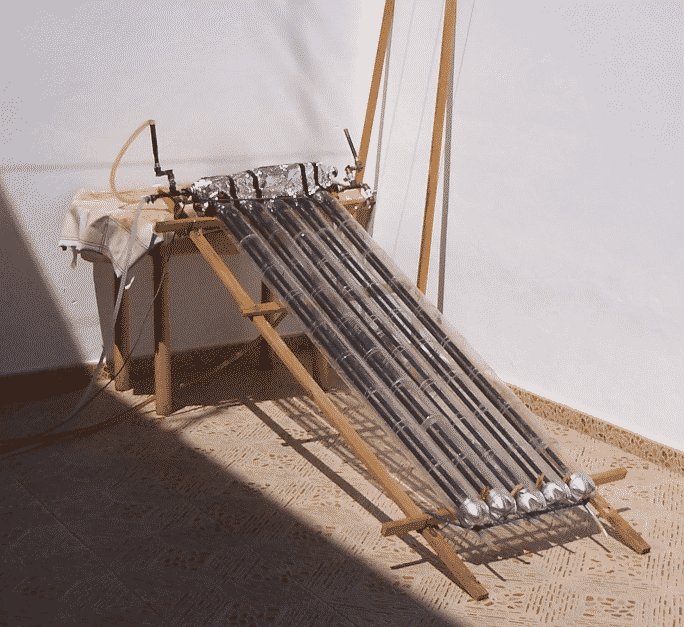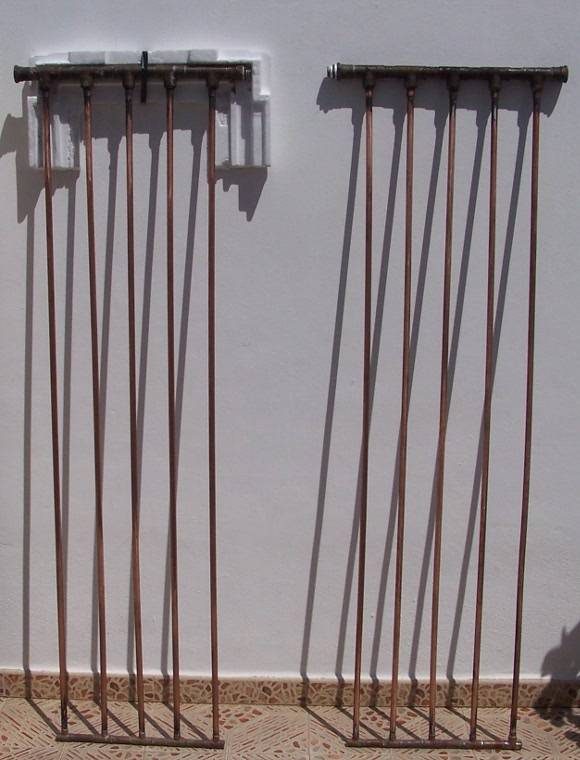
The construction of the homemade collector bars is quite entertaining, and quite messy.
But it is what we have to fill our solar collector box.
In my case, the inside of my homemade solar collector is made of copper.
It is what I advise, it is the most important part of the entire system, and it will be the one that directly transmits all the heat to the heat carrier liquid (in our case the water)
Material needed to build your homemade collector bars
If you decide to build the home collector bars in copper, you will need:
It is a fairly small investment that you can later save for other purposes.
I have made 2 copper collectors:
Each solar collector is made up of 5 copper bars of diameter 15, and about 1.64m long approximately, if you make it 2 meters it will work much better for you.
Both bars of the home collector are joined, at the top with 22-side and 15-center TES.
The union between the horizontal and the verticals is made with the 5 reductions from 22 to 15
Joined at the bottom with 18-side and 15-center "T"
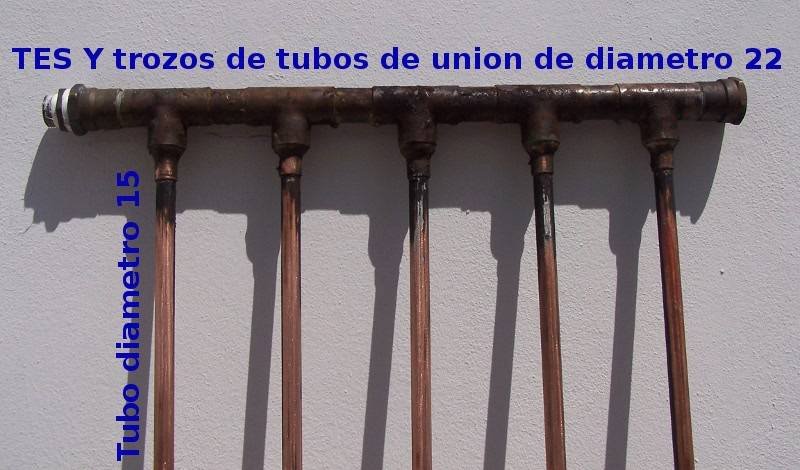
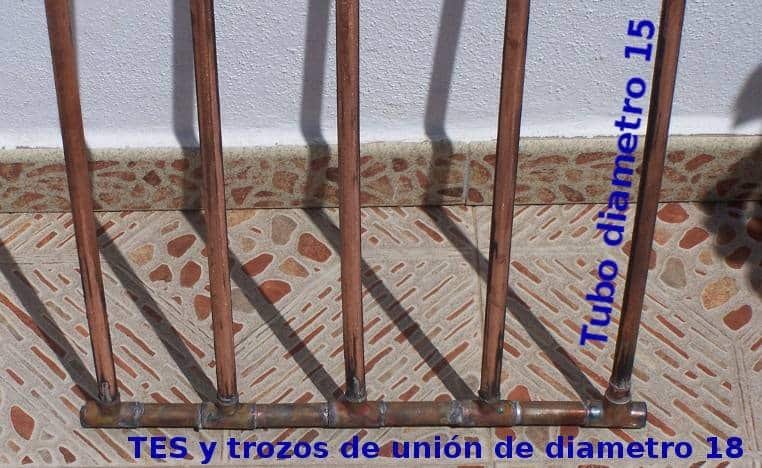
With each set of bars of the home collector being mounted like this:
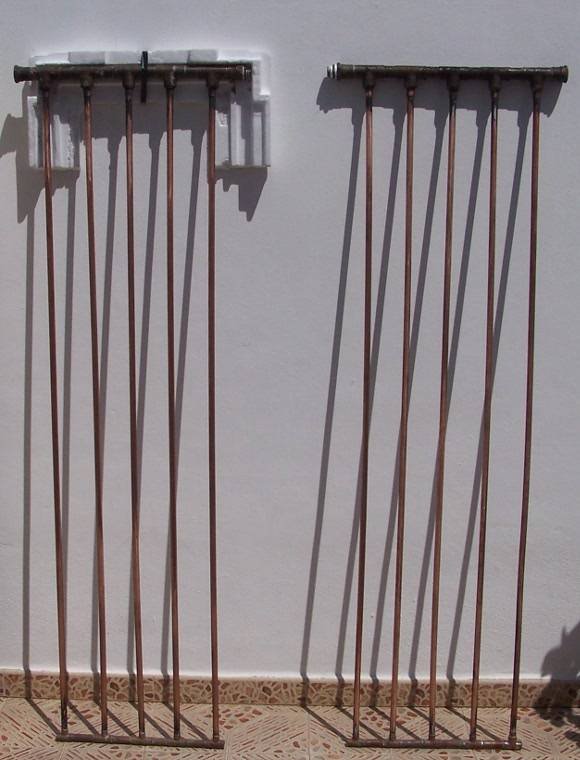
The reason that the upper part is 22-lateral and the lower 18-lateral is not for anything in particular.
It is due to the lack of specific pieces, and it is what I have been "getting" from one place or another.
The only important thing to keep in mind is that the horizontal bars where all the vertical bars meet have more diameter. Because it is where all the waters of the vertical bars meet.
Let's say ... so to speak and to understand it quickly, the vertical bars would be like the arms of a river or small rivers, and the horizontal bars would be the source and the mouth.
I do not know exactly which size is the most ideal, but it is clear that if the horizontal bars are equal to or smaller than the vertical ones, we will be causing a bottleneck, as if we wanted to put the Amazon River in a hose, and if it is very large we will not I know what the negative aspect will be, but the positive is that it will have more heating surface.
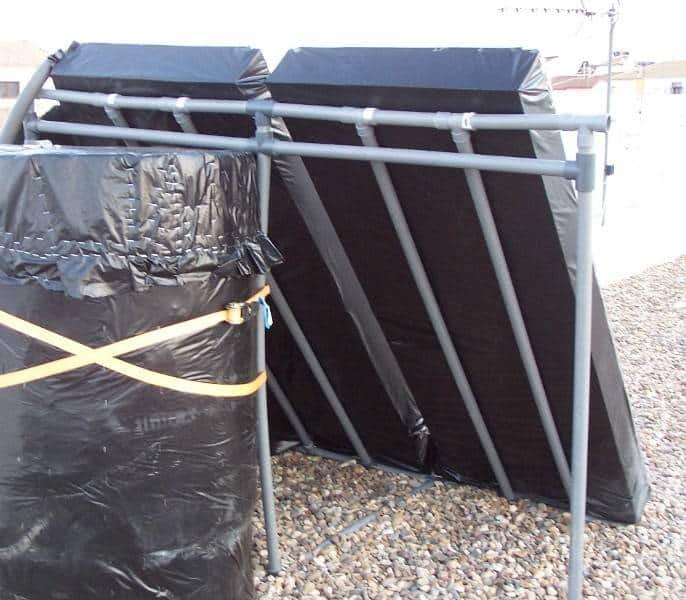
As not all experiences are the same and we do not like to jump into the pool with a complex model, we can practice with other models.
In order to discover what we can expect from our sun and our location.
We can quickly manufacture a coil with a black irrigation hose.
The great advantages of this plastic-based home collector is that it is very cheap and very affordable.
We also have to consider the downsides.
This rolled tube design is going to trap a lot of air and it will cost us a lot for the tube to be completely filled with water.
Those air pockets will be in the upper curves of each turn of the hose.
We can help ourselves with high pressure water to drag these air pockets out.
If with this homemade plastic hose collector we get hot water in a reasonable time, we can expect much better results with a copper collector.

This collector model is the first one that I made and I was really surprised.
So I was quite clear about the investment I was going to make building a homemade copper collector.
This collector is very simple to manufacture.
The advantage of this design is that copper captures light at 360º and therefore heats up quite quickly.
We can also enhance it by installing reflectors at the rear so that the light towards the copper is even greater.
So in summer it would be a very efficient collector.
The disadvantages of this copper collector with polyethylene terephthalate (PET) bottles is that the plastic degrades within a few months and loses transparency.
In this natural degradation, the sealing between the bottles would also suffer.
But another great disadvantage is that it is not very effective in its greenhouse effect, and we notice it every time the sun goes down.
.
